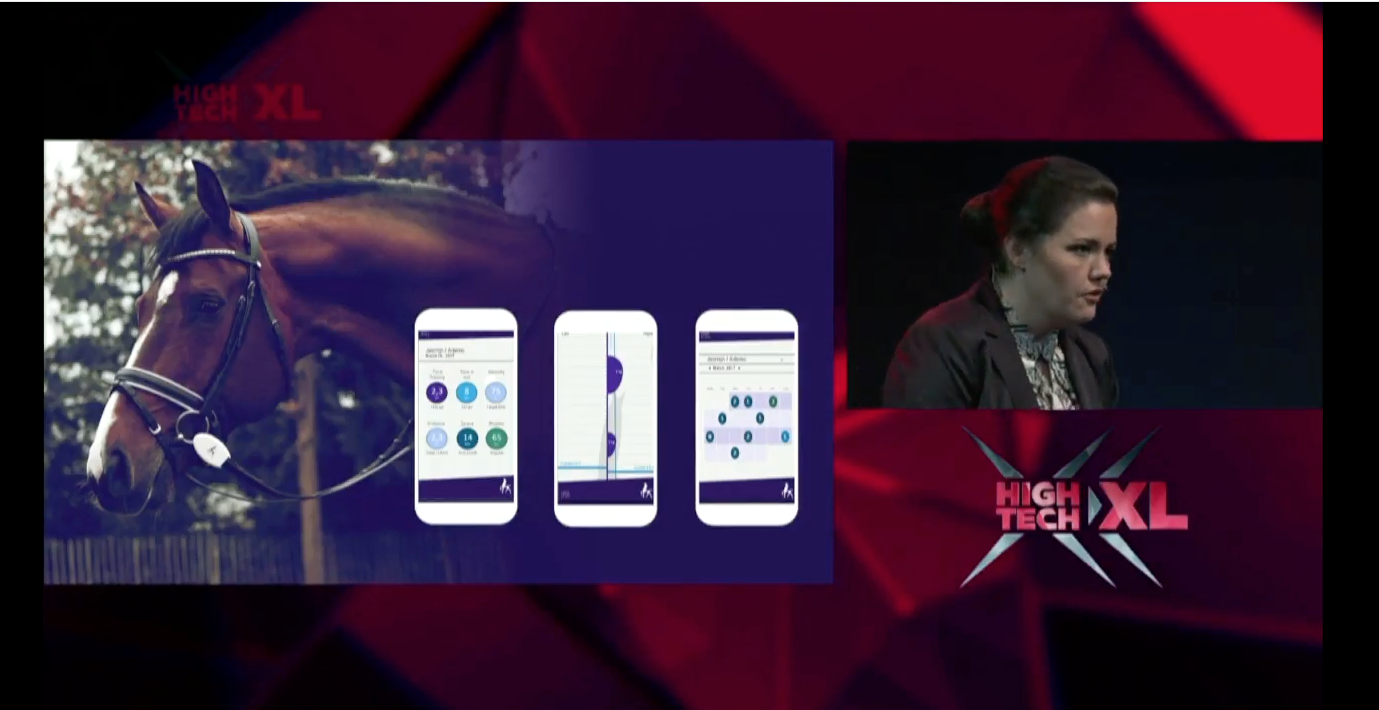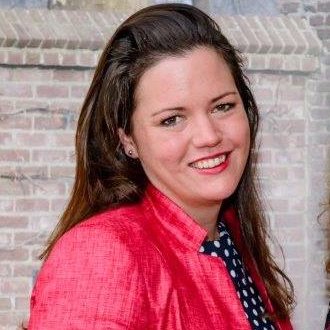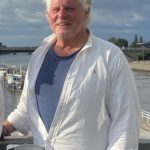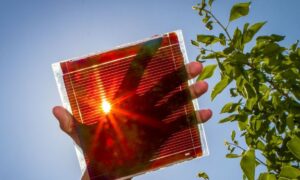(Editor’s note: This post on IPOS is part of a continuing series about the international startup scene in Eindhoven, an emerging innovation center that is attracting talent from around the world. Dispatches is actively matching U.S.-based investors with Eindhoven’s best tech startups.)
Think for a moment about which traditional sports command incredible investments, yet are barely touched by tech.
If horses aren’t front-of-mind, that’s okay. But here’s the deal: This is a global niche which includes everyone from casual riders to Olympic eventing champions to multi-million-dollar Breeders Cup thoroughbreds.
The British Equestrian Trade Association estimates the value of equestrian sports at 4.3 billion pounds in the United Kingdom alone.
Which means opportunity, says Eindhoven-based entrepreneur and equestrian Menke Steenbergen. Steenbergen, who’s a veterinarian, believes every aspect of the equestrian world can benefit from the digital tech revolution starting with how the rider communicates with the horse.
She created IPOS in 2011, developing the first rein sensor technology that gives equestrians data to quantify their performance and the performance of their horses. In real time.
Two sensors sit between the bit and reins, giving the rider or coach direct feedback via a phone app. But performance is just part of the functionality. IPOS tech can also alert the coach or trainer if the horse is struggling.
“What we do is analyze the patterns of the movement,” Steenbergen said. Measuring the difference in rein pressure can tell the rider and trainer an enormous amount about how the rider is controlling the horse, and about how the horse is reacting, and even head movements can reveal lurking physical problems.
Just a slight shift to the left or right indicates discomfort, Steenbergen said. Other data might indicate problems with the rear legs and she says IPOS tech can help predict lameness before it happens.
Tech is easy; analysis is hard
 IPOS uses tension sensors adapted from airline freight-loading technology. The hard part is in overcoming transmission distances in arenas or on racetracks and making it real-time so you can monitor data on a hand-held device, Steenbergen said.
IPOS uses tension sensors adapted from airline freight-loading technology. The hard part is in overcoming transmission distances in arenas or on racetracks and making it real-time so you can monitor data on a hand-held device, Steenbergen said.
But there’s so much more potential to unlock, she said. And, of course, that’s always the challenge.
IPOS is no startup, with a 799 euro Beta selling in 17 countries. Steenbergen has a commercial version at 595 euros, with pre-sale revenue of 10,000 euros.
After developing the hardware, Steenbergen is raising money now to develop the data cloud: “Our ambition is to develop algorithms that make the system self-learning, giving tailored advice based on artificial intelligence.”
Hers is more an American-style entrepreneurial journey than Dutch.
When she was in veterinarian school, tech in the equine industry was all output-related – measuring the height of the horse and how it moved its legs.
“But I’m the athlete,” Steenbergen said. “I need to change my input to become a better athlete. What is under my control is my communication with my reins and with my legs and the reins are more important, so let’s start with that.”
Measuring something is one thing. “But interpreting and saying, ‘How can you improve’ is the hard part,” she said. “How can we help these sports people improve their performance?”
Finding the right metrics
Her early efforts to measure rein pressure yielded lots of raw data, but no insights.
“The first graphs I looked at, it was like, ‘I’m seeing data going all over the place. I don’t see a pattern. It’s not going to work.’ Until I met Imke Schellekens-Bartels, who competes at the Olympic dressage level,” she said.
“I measured her rein pressures and I said, ‘Oh my God, this is clear. This is spot on. She has the exact amount of tension on both reins. All the other riders I’d been measuring were chaos … also for the horse.”
The data showed Schellekens-Bartels has an extremely light and even touch, increasing pressure ever so slightly to command the horse, then letting off.
“As an athlete, I want to be like her. And I was nowhere close,” Steenbergen said.
So, now Steenbergen had her benchmark data and could use it to analyze other riders.
She could tell riders, “Here’s one of the best in the world, then here’s you. You (control the horse) with 20 kilograms of pressure, and she does it with two.”
That was Steenbergen’s epiphany for IPOS. She quickly figured data tracking could have additional value, such as predicting injuries. “As a veterinarian myself, I can say 50 percent are suffering from undetected injury,” Steenbergen said.
The most common horse injuries are torn tendons. “Biggest problem with racehorses is they’re young,” Steenbergen said. “You can train the muscles, but you can’t train the tendons,” the connection between the muscle and the bone.
Spot the stress early enough and riders can cure it by resting the horse.
That’s just the beginning. Digitalization and quantifying big data can be applied anywhere. For example, as a vet, Steenbergen knows that ammonia from urine can adversely affect the growth curve of piglets. “The ammonia measurements in (horse) stables is over the top. It’s really a big killer for the lungs,” she said.
Creating algorithms that analyze what kind of feeding can yield the best results on the track would give trainers a huge advantage over competitors using their instincts.
“I can get you millions of examples … it’s just finding the first one that can affect the market. That’s why I chose reins. I think this can really benefit all riders,” Steenbergen said.
‘It’s not bad luck; it’s science’
But how do you get from data to training protocols?
Getting equestrians to see the value of digital isn’t easy. Forget about measuring rein pressure: Riders didn’t even keep track of workouts, unlike runners who insert rest days in their hard training schedules.
“We all ride every day for an hour. It’s normal. No one waits three days. So it’s an overload for the muscles,” Steenbergen said. “The muscles deteriorate and an injury occurs a year later. The rider says, ‘Oh, I have bad luck. I have a muscle sprain.’
“It’s not bad luck, it’s science.”
Moreover, revolutionizing an industry is not the way to win a popularity contest, running up against the analog/digital divide in training.
A trainer will bring Steenbergen in and after tracking the data, she can see the injury and whether the horse is healing. This is a sensitive moment for the trainer, “who says, ‘I should have seen that.’ The trainer is not happy with me,” Steenbergen said.
“I have to be careful to align myself with the trainer and not make his job harder ….”
It always starts with capital
The first obstacle she had to negotiate to bring IPOS to market was money.
First, she tried the banks. “They said, ‘Meisje (Dutch for little girl), it’s obvious you don’t understand anything in the world.’ And I said, ‘But I have a good idea ….’ ”
She found an initial investor, but he could only take her so far in a project she estimates will ultimately take 2 million euros. She’s been marketing, flying to conferences in the U.S. and Europe, getting potential clients excited. Beiman De Haas, the largest equestrian goods wholesaler in Europe and Canada, is carrying the IPOS product.
She also went through the six-month HighTechXL accelerator on High Tech Campus Eindhoven.
Now, Steenbergen is still building the analysis tools and needs a partnership with a big data company, as well as U.S. investors in the equine industry.
“It’s just a matter of getting all the data in and the math can do its work.”
The numbers
• IPOS has a team of seven people with skills that include international business, finance, and tech.
• The total estimated market value for IPOS is about 60 million euros just in the Netherlands, and 600 million for Europe as a whole.
• The commercial product will ship in the fall, with IPOS expanding into Germany, France, and England.
• Revenue projection is for 44 million euros by 2021.
• IPOS is seeking an investment of 600,000 euros for marketing and sales and developing additional product lines.
Co-CEO of Dispatches Europe. A former military reporter, I'm a serial expat who has lived in France, Turkey, Germany and the Netherlands.
















